Before there was Arnold Friberg, before Living Scriptures and the Book of Mormon comic books, there was George Reynolds (1842-1909).
Some of Reynolds’ writings about the Book of Mormon were state-of-the-scholarship for his day: His Complete Concordance to the Book of Mormon, A Dictionary to the Book of Mormon, and several refutations of the Spaulding story fall into this category. Other writings attempted to simplify and popularize the Book of Mormon among church members, especially the youth. So far as I have been able to determine — and my search has not been exhaustive, so I could quite easily be corrected here — his 1888 The Story of the Book of Mormon may contain the first illustrations of the Book of Mormon, all of them paintings of varying quality produced by various Mormon artists.
The first mass-produced, widely distributed illustrations for the Book of Mormon appeared in 1891 with George Reynolds’ “Lessons from the Life of Nephi,” published in the Juvenile Instructor. With one exception, those illustrations were produced by the LDS artist C.C.A. Christensen (1832-1912), whose primitive style featuring generally very long and lean humans posed stiffly against idealized backgrounds are familiar to many of us (a wide collection of images is available here). Christensen’s paintings, made in 1890, were sent to Chicago for engraving by Vandercook & Co. and returned to Salt Lake for black and white printing in the Juvenile Instructor.
Reynolds’ Lessons were exceedingly didactic; Christensen’s paintings were stiff and did not reproduce especially well in Vandercook’s engravings. Still, they appear to have been eagerly received by the Mormon public; we’ll see in a follow-up post later this week how they fixed the Nephite image in the Mormon mind.
Reproduced below are the “lessons” given by Reynolds after each of his summaries of the Book of Mormon stories, and both the black and white Vandercook engravings seen by the public and Christensen’s color paintings, still owned by the LDS Church.
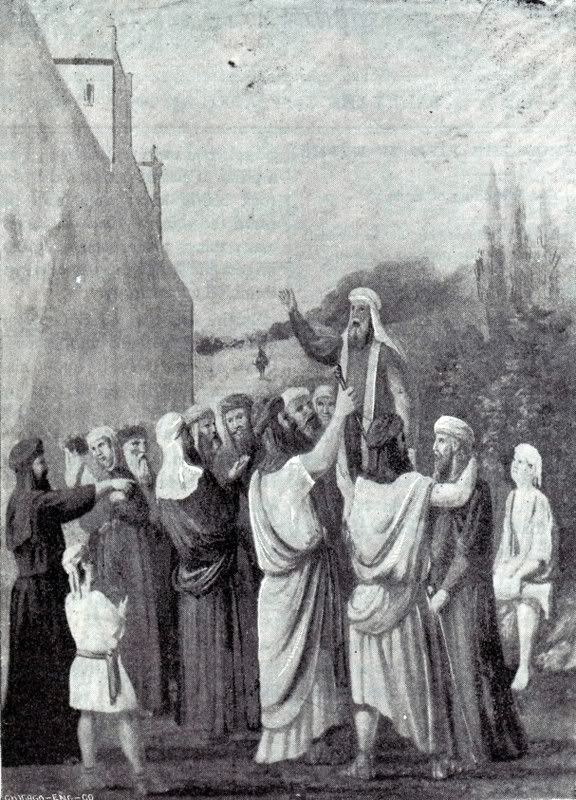
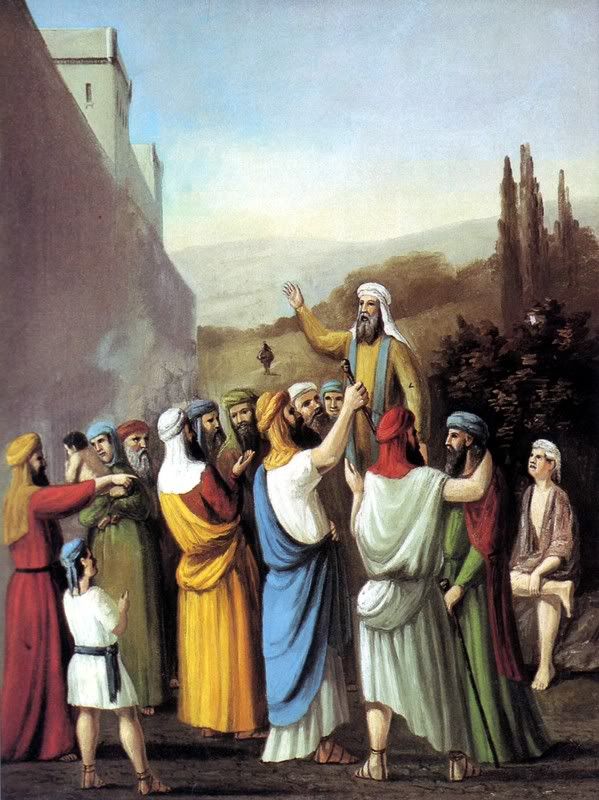
.
.
.
.
.
.
.
.
.
.
.
Lehi Preaching to the Jews
“Our lesson teaches these truths: That all things are known unto the Lord, the future as well as the past; and that He reveals to His servants, the prophets, many things before they come to pass, that His name may be glorified in their accomplishment. Further, that when a people turn from Him, and become wicked and corrupt He does not punish them until He has sent His messengers to warn them of the danger of their evil ways.”

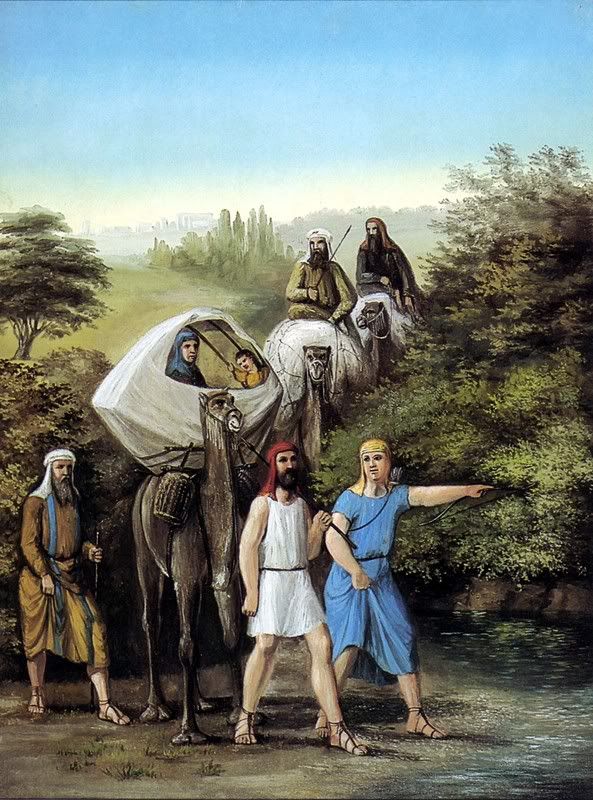
.
.
.
.
.
.
.
.
.
.
.
..
Lehi and His Family in the Wilderness
“The reward of obedience is the lesson that is today impressed upon us. If Lehi had not been obedient to the word of the Lord, his garments would not have been free from the blood of that doomed generation; he would not have been blessed with the approval and commendation of God, and would have remained in Jerusalem to be destroyed with the rest of the unbelieving. Obedience to God is ever the path of safety and salvation.”
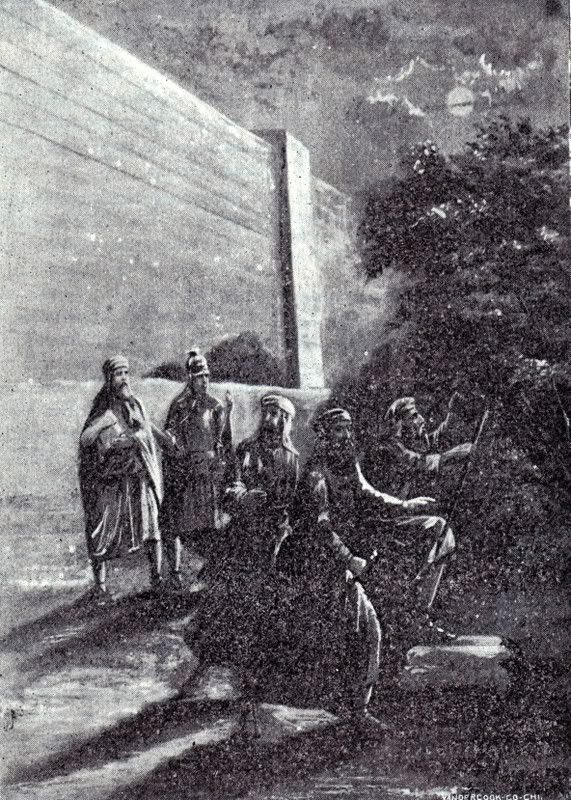

.
.
.
.
.
.
.
.
.
.
.
.
Nephi and Zoram with the Records
“Our lesson today teaches this important truth – That whenever the Lord gives a command to men He always opens the way for its accomplishment to those who seek to obey Him in faith; in other words, God never asks His children to do impossibilities, as all things are possible with Him.”
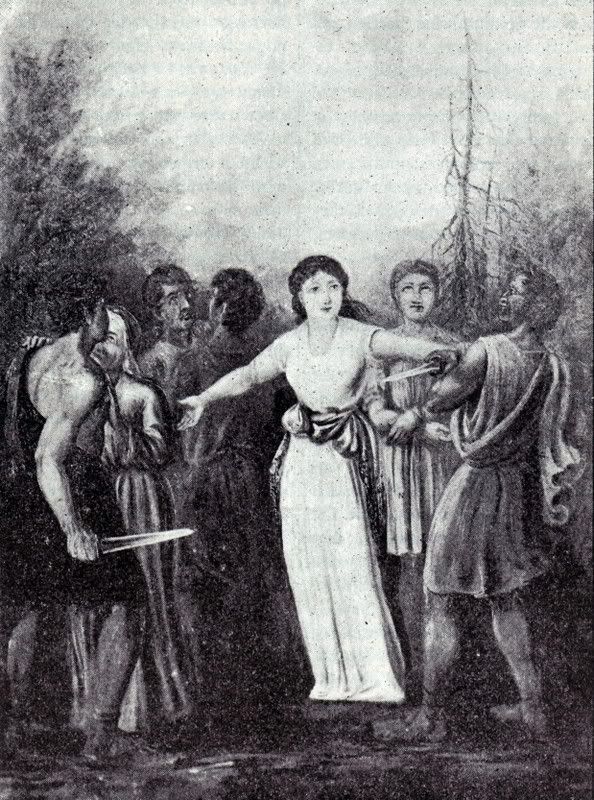
The Peacemakers
(This painting was produced by George Ottinger rather than Christensen although it appears in the “Lessons from the Life of Nephi” series otherwise illustrated only by Christensen; I did not find a color image to scan.)
“Our lesson teaches us the power and efficacy of fervent, heartfelt prayer. Nephi knew that no one could deliver him but God, and he sought that deliverance in fervent supplication. God heard that prayer, the answer came at once; the loosened cords fell from his body, slipped from his hands, and he confronted his brethren free and unshackled, delivered by a power that was more than human, for neither man nor woman had touched the cords that bound him. Again, the repentant prayer of his assailants brought forgiveness from heaven. Happy would it have been for them and their posterity had this repentance been lasting, but unfortunately it was transitory – it affected them but a short time, and very soon we read of them again acting as cruelly and murderously as on this occasion.”
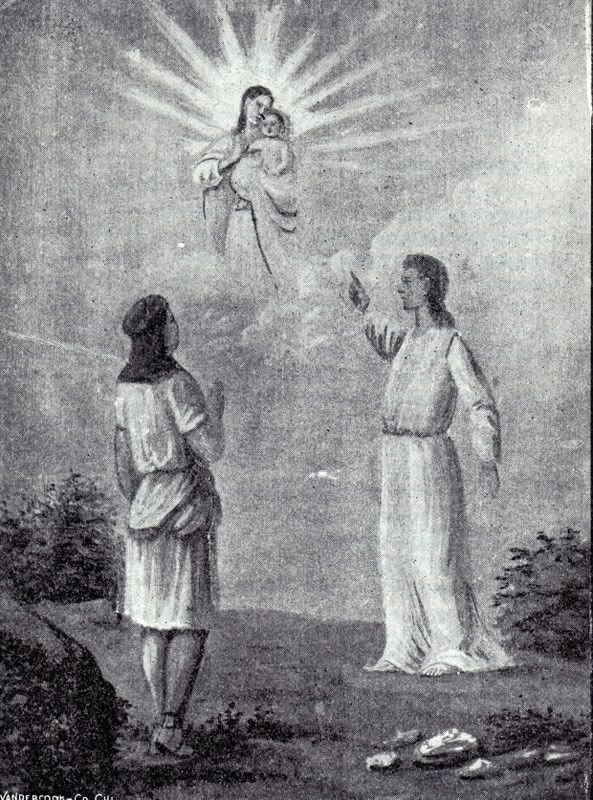
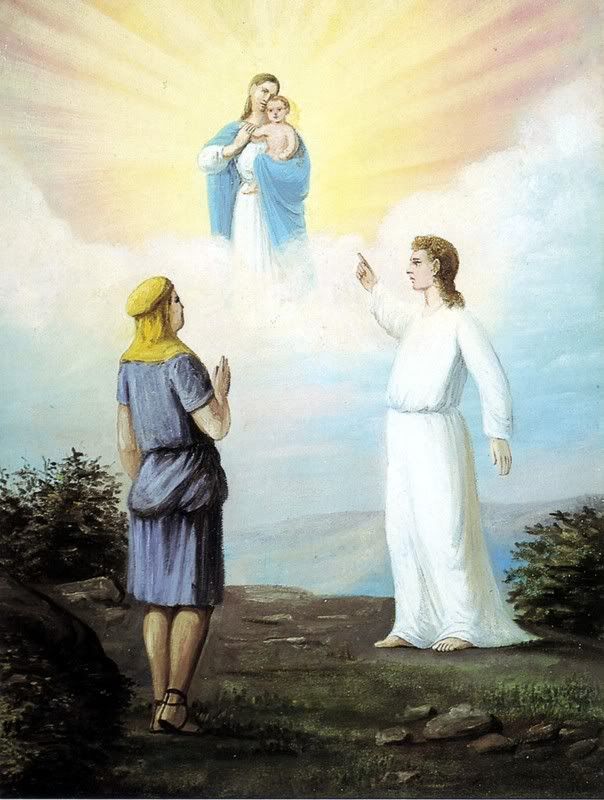
.
.
.
.
.
.
.
.
.
.
.
.
Nephi’s Vision
“This lesson proves to us that known unto God are all His works from the foundation of the world to the end of time; and that when it pleases Him He reveals His designs to faithful ones among His servants and shows them things that have not yet come to pass. One of the means He uses for this purpose is to grant these favored ones visions, by which they are shown the future, somewhat after the manner that we can look at pictures of the past. Lehi and Nephi were among those who were greatly blessed in this manner, as have also been many of the Priesthood and members of the Church in the present day.”
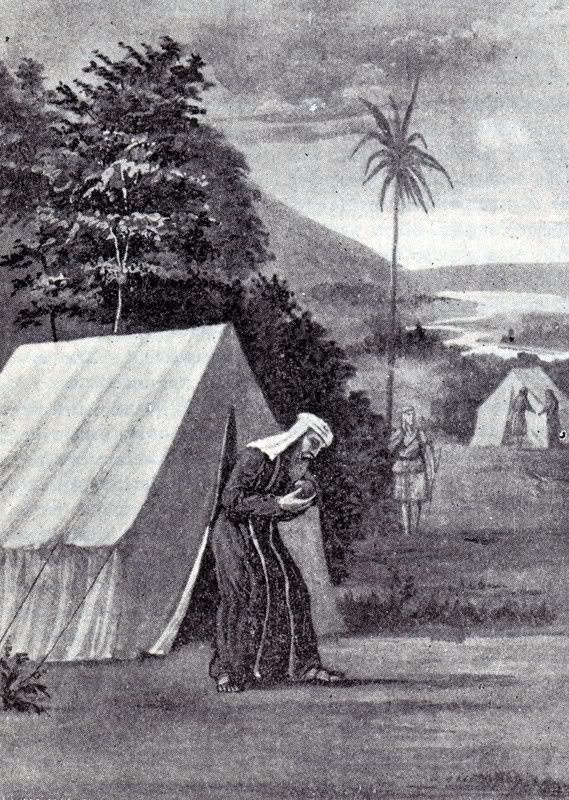
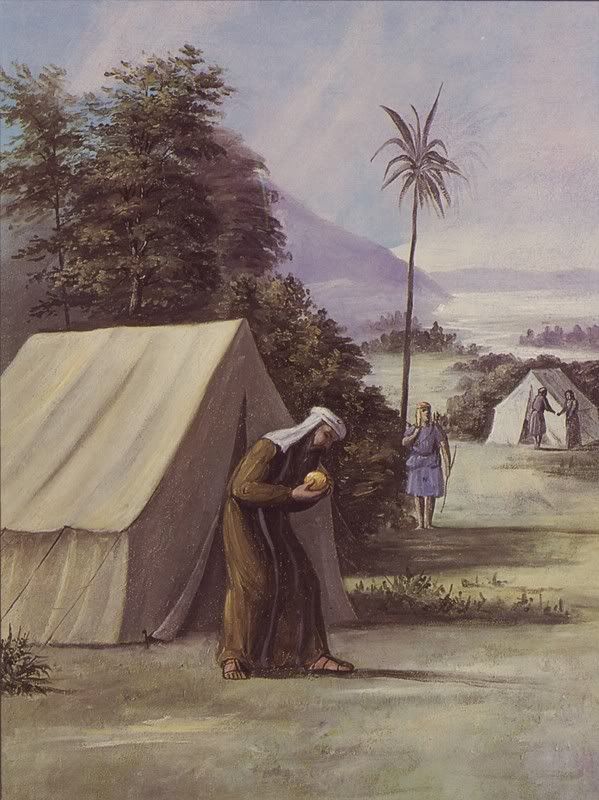
.
.
.
.
.
.
.
.
.
.
.
.
Nephi Finding the Liahona
“Our lesson teaches us that God’s ways are not always man’s ways, and that by simple, and sometimes apparently insignificant methods, peculiar to Himself, He brings about the most perfect results; by small means God can accomplish great ends.”
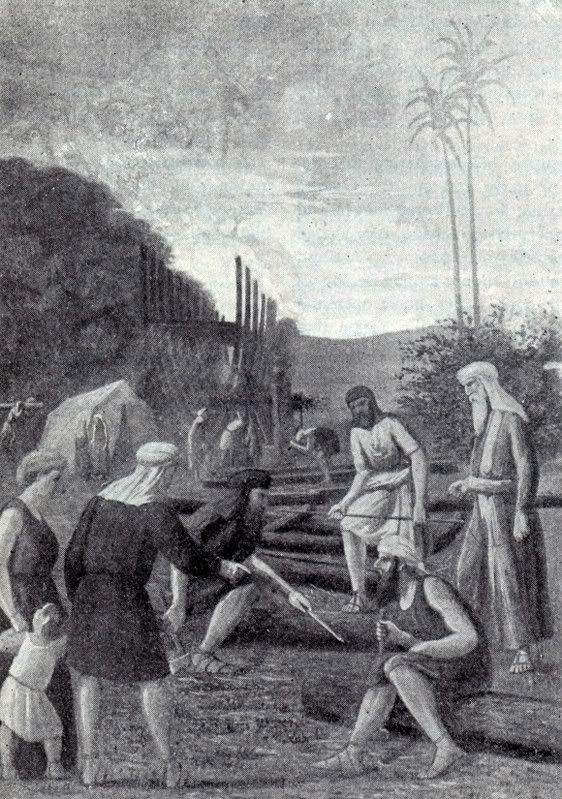
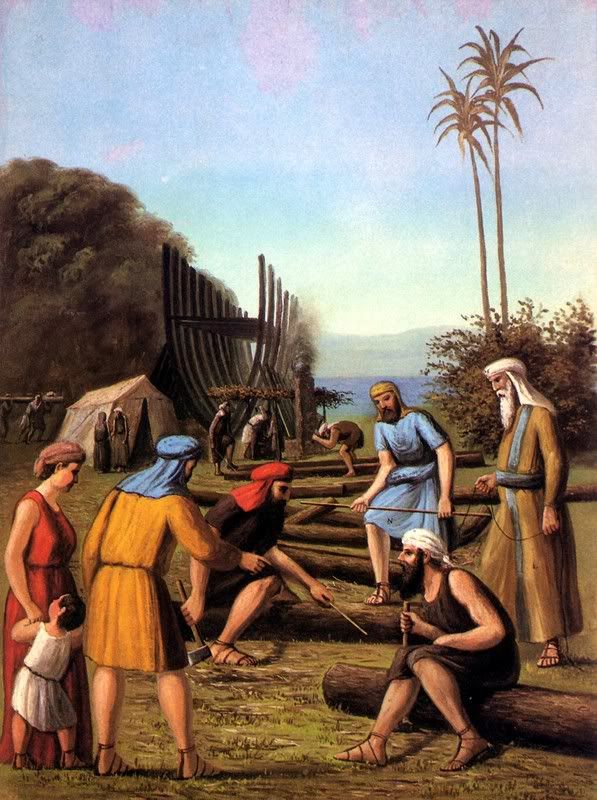
.
.
.
.
.
.
.
.
..
.
.
.
The Building of the Ship
“The great truth that this lesson impresses, is that all things are possible to those that have a living faith. Without faith it is impossible to please God or fulfil His purposes. By faith Noah, being commanded of God, built the ark; by faith Jared and his brethren built the eight barges which brought them to this land; and by faith Nephi constructed the ship that answered the same purpose as Jared’s barges.”
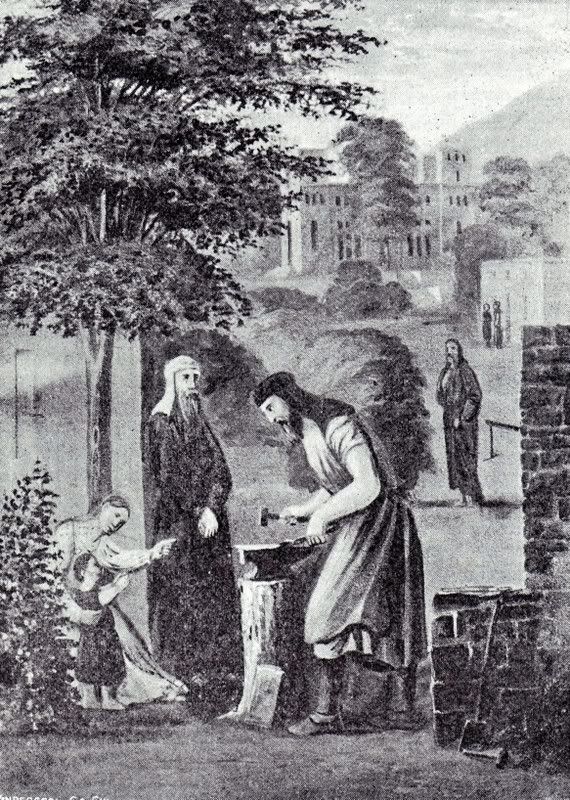
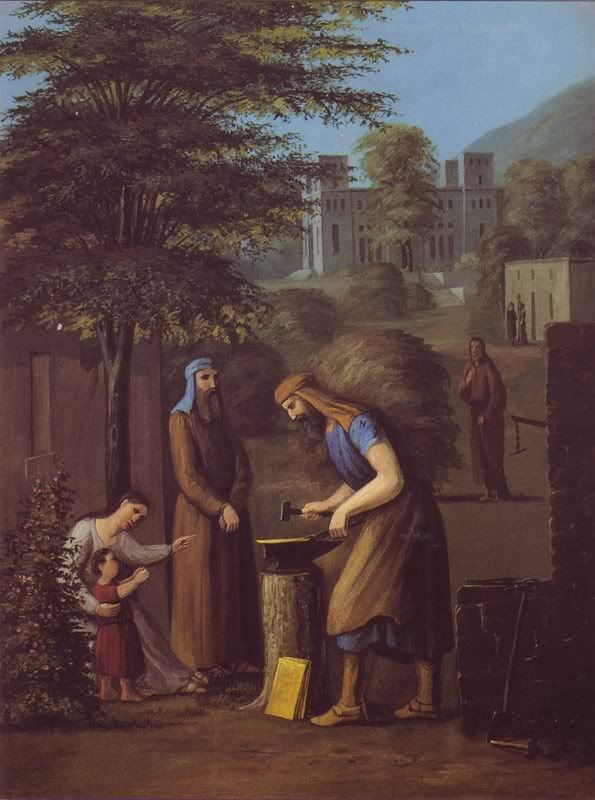
.
.
.
.
.
.
.
.
.
.
.
.
Nephi Making the Plates
“Nephi’s whole life is an example to us all and in every department of life. He was a dutiful son, an affectionate brother, a firm friend, a wise leader, an honorable man and a faithful servant of heaven. There are few characters in all history so perfect in all its parts, few lives so completely, so admirably spent in the service of God and to the good of their fellow man.”
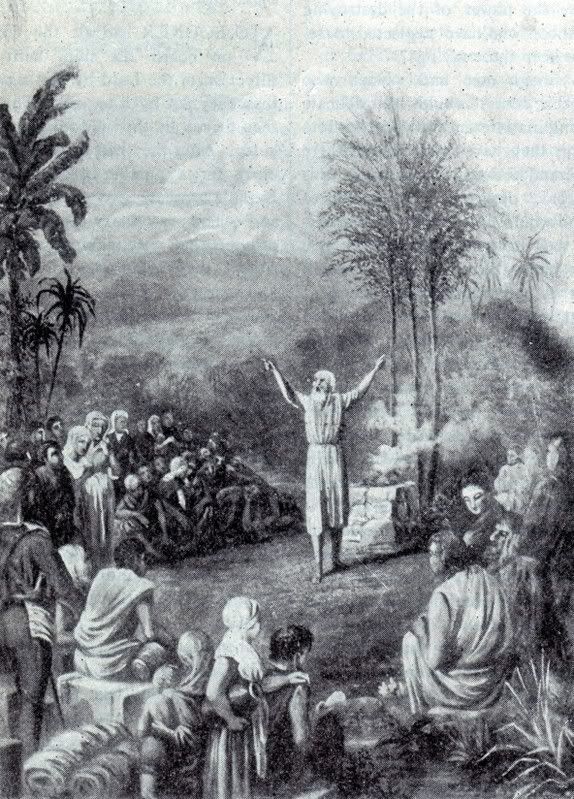
Lehi Offering Sacrifice
(This painting is apparently no longer to be found in the Church’s collection; whether it is extant elsewhere is unknown.)
“Our lesson today presents many points for thought. Particularly is our attention drawn to the power of God’s servants over the elements. At Nephi’s prayer the storm was stilled; and Jacob, his brother, says: ‘We truly can command in the name of Jesus, and the very trees obey us, or the mountains, or the waves of the sea.’ No doubt Nephi prayed that the storm might cease in the name of Jesus. The Savior, on more than one occasion, when on earth, stilled the tempest; the winds and waves obeyed His voice, more readily than did the hearts of men.”
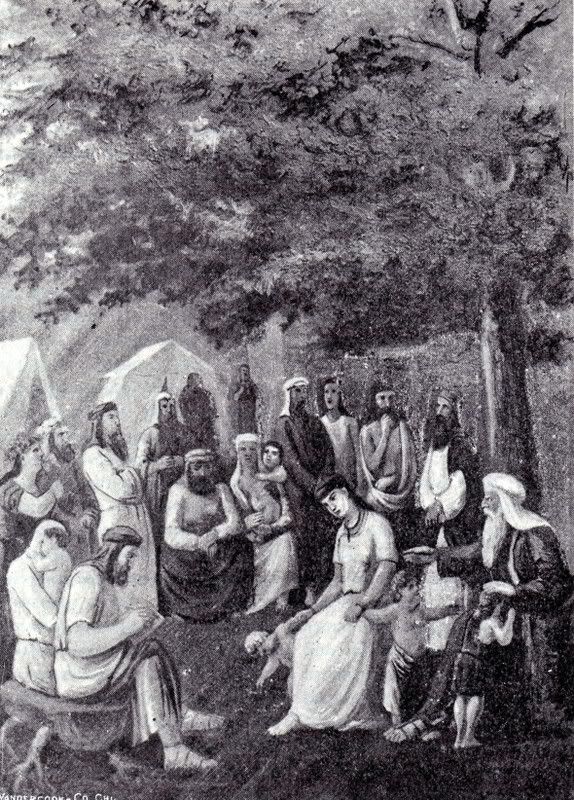
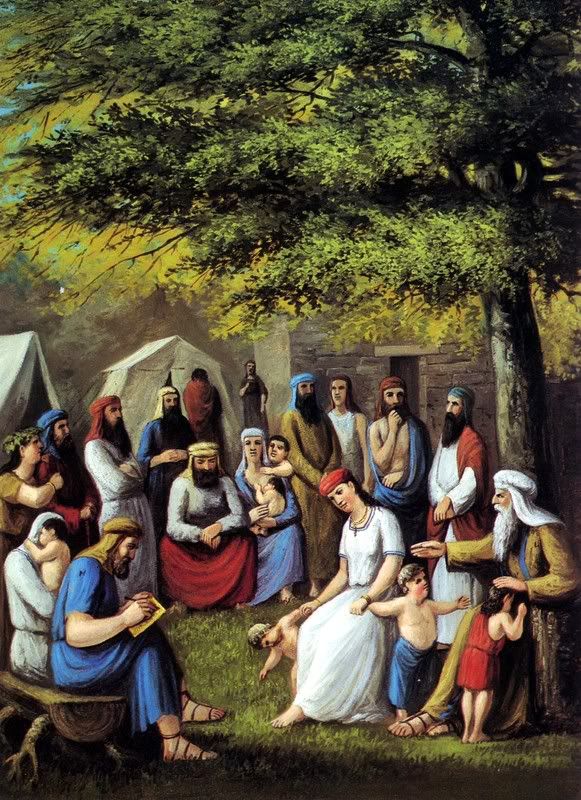
.
.
.
.
.
.
.
.
.
.
.
.
Lehi Blessing His Posterity
“The Lord honors those who honor him; He inspires their words, He fulfills their prophecies. He did so with Adam, Enoch, Abraham, Jacob and Moses and He did so with Lehi. He does so, also, with His servants today. The spirit of prophecy is given to the patriarchs, when they pronounce blessings on the heads of the people, and those blessings are sooner or later, but all in God’s time, fulfilled. The end is not yet, though thousands of years have passed, of the events foretold by Enoch and Jacob, by Moses and Lehi.”
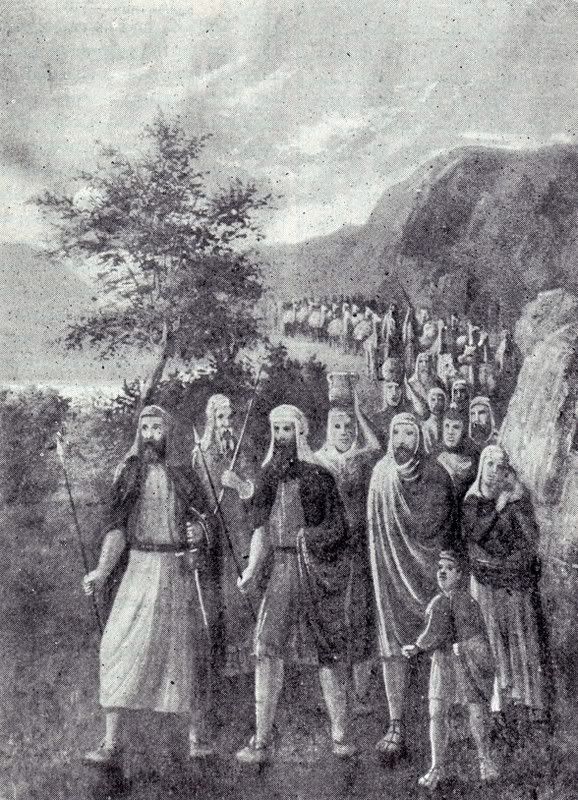
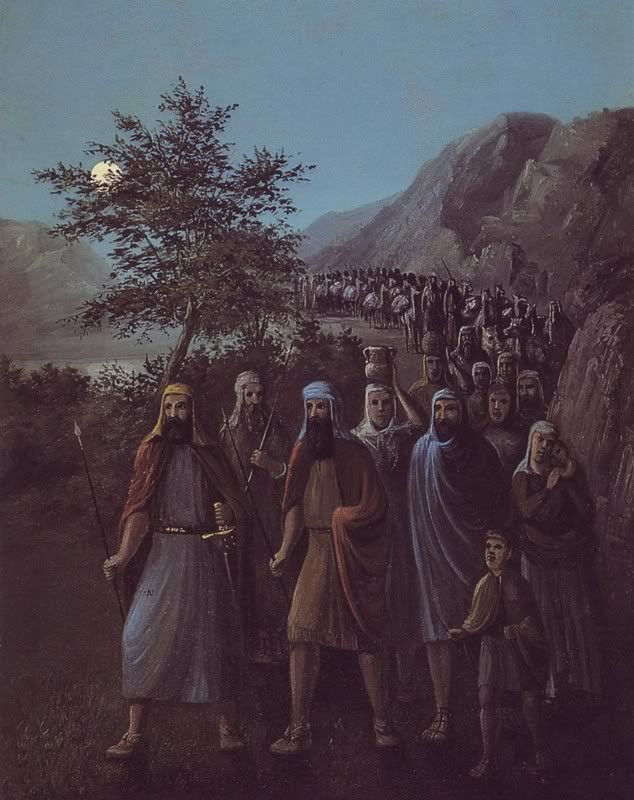
.
.
.
.
.
.
.
.
.
.
.
.
The Nephites Seeking a New Home
“One lesson we can learn from the foregoing is that the purposes of God are not to be thwarted by man. When the wicked array themselves against His work, He finds ways of escape for the righteous to fulfill His law.
“Another lesson is that it is ofttimes better to suffer wrong than to too stoutly assert one’s undoubted rights. Nephi and his people gained by giving up their homes to their hard-hearted brethren. They gained a better inheritance, they obtained peace, and withal the blessing and approval of God.
“To remain as one people meant contention, bloodshed and grievous sin; to separate, though apparently at a sacrifice, promised peace, happiness, prosperity and righteousness.
“They stooped to conquer, fled to gain new strength.”
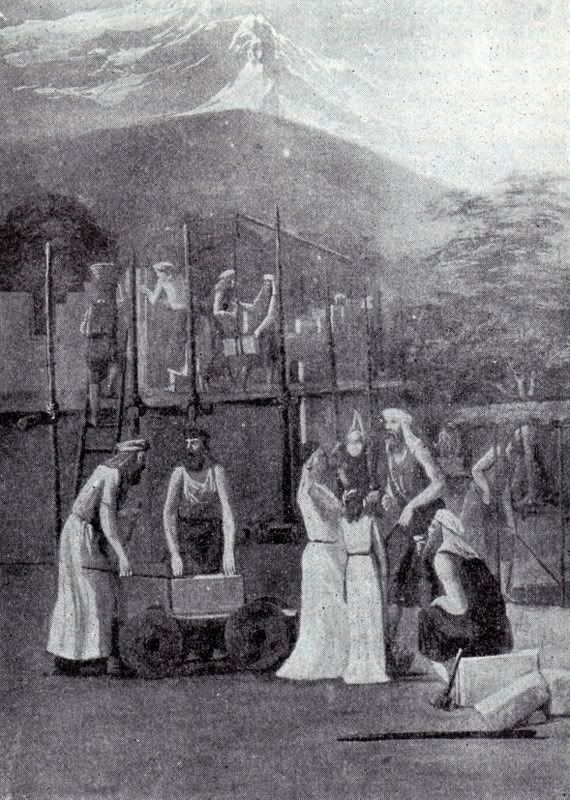
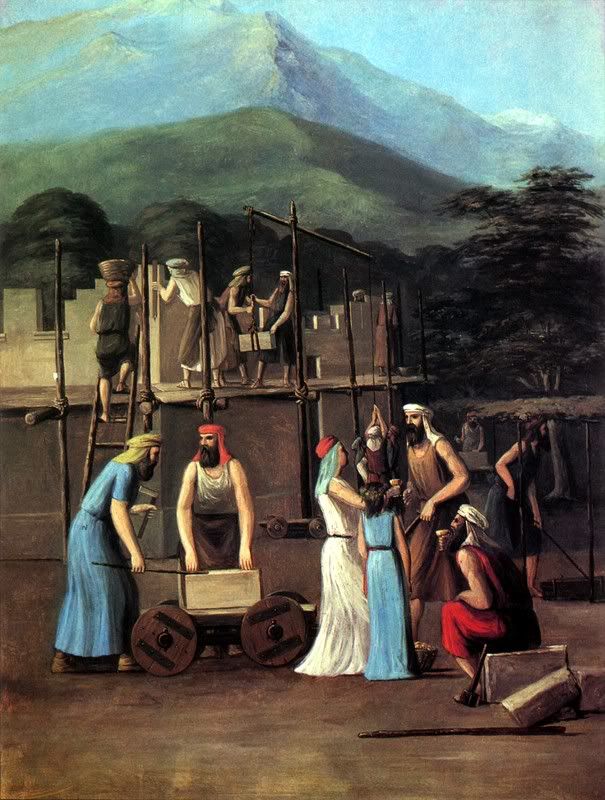
.
.
.
.
.
.
.
.
.
.
.
.
The Building of the Temple
“The zeal of Nephi’s people in building a temple to the name of the Most High God is an example that all God’s covenant children can wisely follow. Their faith, union and perseverance in this noble work are worthy of the highest praise, and prove how much can be accomplished by a united people, no matter how few their numbers. It is an example of courage, patience and devotion that we all do well when we imitate.”
Continue reading at the original source →



